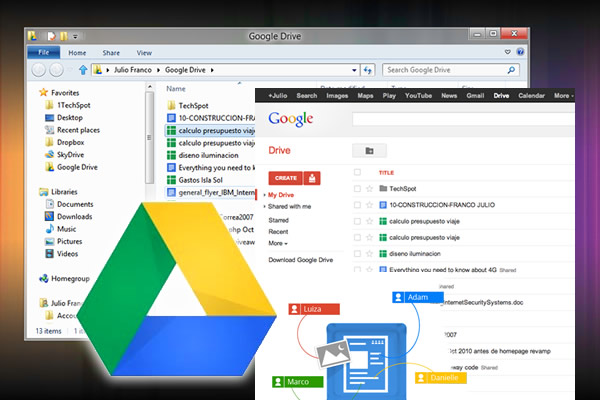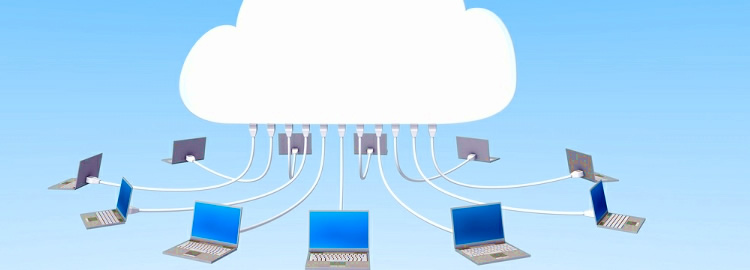It's cloud storage week, with Dropbox rolling out an update that improves how its users can share things, Microsoft's SkyDrive getting dedicated desktop apps and a revamped feature set, and Google Drive finally making its long-awaited debut. The market suddenly got much more competitive perhaps even before we all realized it was necessary.
Although there are many more options out there, some serving specific niches, we've hand-picked what arguably are the most high-profile and consumer-friendly cloud storage services currently out. We took them for a spin to see how well they stack against each other, first with a brief overview on the table below and later in better detail, with impressions and commentary to give you a better idea of which one may fit your needs best.
| Dropbox | Google Drive | iCloud | SkyDrive | SugarSync | |
|---|---|---|---|---|---|
| Free storage | 2GB | 5GB | 5GB | 7GB (25GB limited time offer) |
5GB |
| Additional storage (price per year) | 50GB ($99); 100GB ($199) |
25GB ($30); 100GB ($60) |
10GB ($20); 20GB ($40); 50GB ($100) |
20GB ($10); 50GB ($25); 100GB ($50) |
30GB ($50); 60GB ($100); 100GB ($150) |
| File size limit | 300MB via browser, unlimited from desktop | 10GB | 25MB free accounts, 250MB paid users | 2GB | |
| Desktop apps | Windows, OS X, Linux | Windows, OS X | Windows, OS X | Windows, OS X | Windows, OS X |
| Mobile apps | iOS, Android, BlackBerry | Android, iOS | iOS | Windows Phone, iOS | iOS, Android, BlackBerry, Windows Phone |
| Web interface | Yes | Yes | Yes | Yes | Yes |
| Version tracking | Yes | Yes | No | Yes | Yes |
| Multiple folder sync | No | No | No | Sort of | Yes |
| Sync over LAN | Yes | No | Yes | No | No |
| Stream to mobile | Yes | No | Yes | Yes | Yes |
| Public sharing | Yes | Yes | No | Yes | Yes |
| File/folder collaboration | Yes | Yes | No | Yes | Yes |
| Password protect file sharing | No | No | No | No | Yes |
Dropbox wasn't the first cloud-based storage service in the market, but it certainly was the one that pioneered the seamless one-folder synchronization approach that everyone is following now: toss any file into a preset folder and it automatically appears in any other device connected to your account. Make an edit and everything synchronizes instantaneously. Famous for its simplicity and ease of use, Dropbox doesn't fall behind when it comes to features either, with a version tracking system, easy sharing, collaboration options, and more.
Performance-wise Dropbox offers more flexibility than most competing services. You can tweak how fast it uploads and downloads files, which is great if you don't want it to steal bandwidth from other important things, and if two devices are on the same network they will sync much faster over LAN.

The Dropbox client works the same on every major platform – Windows, Mac, Linux, iOS, Android, BlackBerry – and you can also access your files through its clean and capable web interface on any device with a browser. Another key strength is that its popularity has led a lot of third-party developers to integrate Dropbox synchronization functionality into their apps and services using the public API.
Its main drawback? Dropbox offers just 2GB of storage for free, which compares unfavorably to rivals, but you can bump that up to 18GB without spending a dime by referring new users (at 500MB bonus space apiece). Paid storage is also expensive: 50GB or 100GB of extra storage costs $9.99 or $19.99 a month.
The debutant Google Drive offers the same drag-and-drop synchronization capabilities as Dropbox on the desktop, with clients available for Windows and OS X, but its web portion is more robust than the latter. On the web, Drive ties in with Google Docs and another handful of Drive apps for Chrome to support up to 30 types of files, allowing you to view or edit images and videos, work on documents, and more, right inside the browser.
Sharing capabilities are also present, but as far as I can tell you can't set permissions from the desktop client, so you'll need to go to the web app and click through a few options depending if you want to send by email, share with other users, or make a file public. You can set files as view-only or make them editable.

Search is also a big part of Google Drive – again, from the web interface – allowing you to search by document type, owner, and other advanced filters. There's even OCR capabilities built into the service so Google will scan any images on your Drive account for text and make them searchable, or if Google can decipher the contents of your pictures (a landmark, for example), you can just search by subject and it will come up in the results. That's a neat feature indeed, although it might turn off more privacy conscious users – especially after checking the TOS.
Google Drive is also available on Android and the iOS client is supposedly on the way. It comes with 5GB of free storage (Google Docs files don't count towards that limit), and offers upgrade options like $2.49/month for 25GB of extra storage, $4.99/month for 100GB of storage, and 200GB for $9.99/month.
Apple's iCloud lacks many of the features available in cloud storage services like Dropbox or SkyDrive, but still stands to grab a good chunk of the market for a simple reason: its deep integration with iOS. In fact, almost 70% of the 350+ million iDevice users have access to iCloud, with over 100 million using it already.
If you are into the Apple ecosystem this one is a no-brainer. It's virtually transparent to the user and can keep your mail, contacts, calendar, documents, backups, and more, synchronized and stored in the cloud. Apple's iWork suite as well as various third-party OS X and iOS apps come with iCloud sync capabilities built in, but aside from those you won't be able to just throw any type of file into your account. It's definitely a more streamlined yet closed way to manage your stuff in the cloud.

Your music, movies, apps, books, and TV shows purchased from iTunes are saved to the cloud but don't count against your free storage, and you'll be able to stream that content to your iPhone and iPad. Pay an extra $25 a year for iTunes Match and you'll be able to store and stream music obtained from other sources, too.
The web interface is more limited compared to other cloud services but it's there in case you need to quickly check up on you mail, contacts or iWork documents from a browser, or to use the handy "Find My Phone" feature. Otherwise it's available on Mac, Windows and iOS and comes with 5GB of storage for free.
